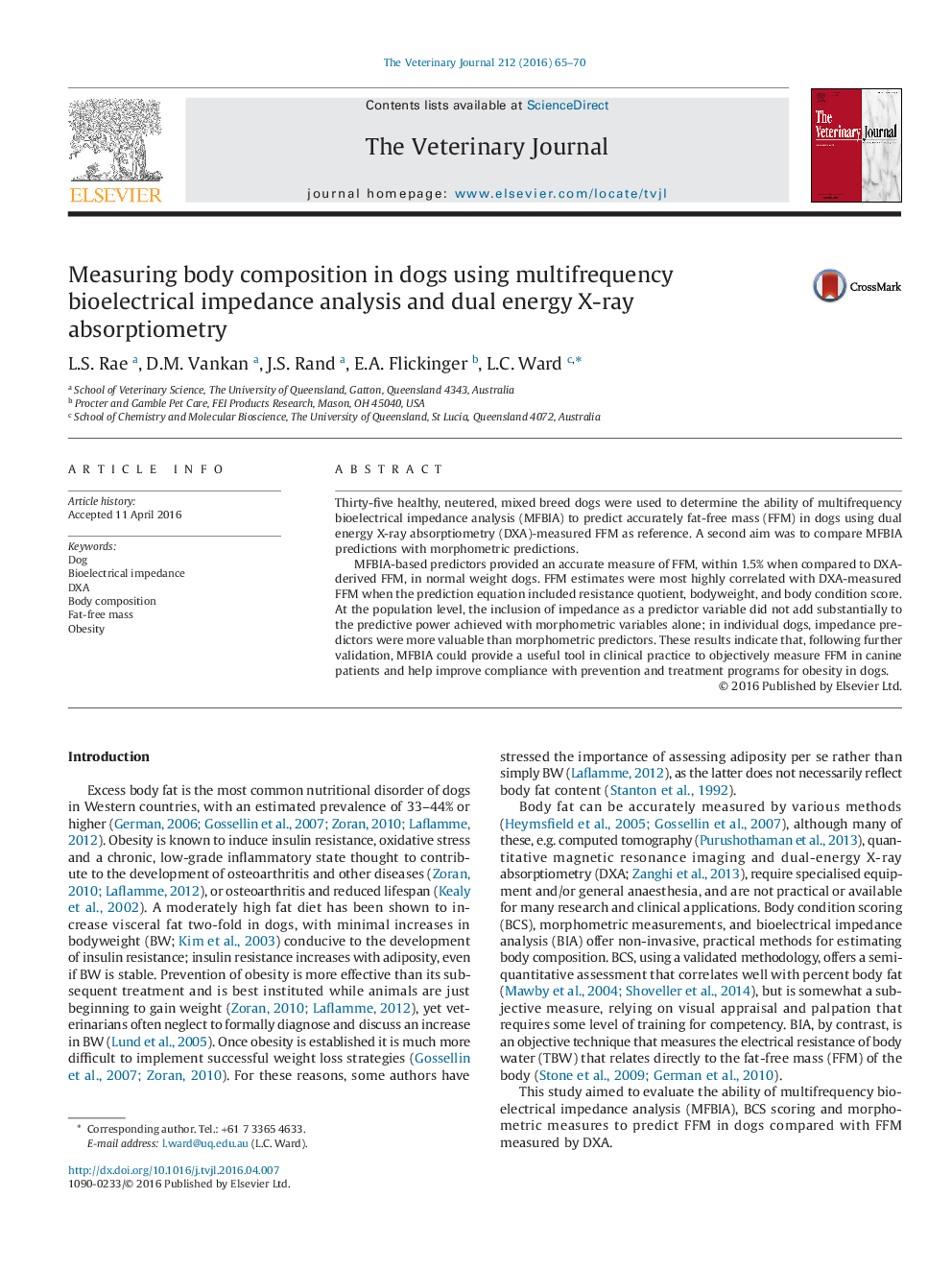| Article ID | Journal | Published Year | Pages | File Type |
|---|---|---|---|---|
| 5797274 | The Veterinary Journal | 2016 | 6 Pages |
â¢Body composition of dogs was measured using multifrequency bioimpedance.â¢Reference body composition was measured by dual-energy X-ray absorptiometry.â¢Cross-validated bioimpedance predicted mean fat-free mass within 1.5% of measured values.
Thirty-five healthy, neutered, mixed breed dogs were used to determine the ability of multifrequency bioelectrical impedance analysis (MFBIA) to predict accurately fat-free mass (FFM) in dogs using dual energy X-ray absorptiometry (DXA)-measured FFM as reference. A second aim was to compare MFBIA predictions with morphometric predictions.MFBIA-based predictors provided an accurate measure of FFM, within 1.5% when compared to DXA-derived FFM, in normal weight dogs. FFM estimates were most highly correlated with DXA-measured FFM when the prediction equation included resistance quotient, bodyweight, and body condition score. At the population level, the inclusion of impedance as a predictor variable did not add substantially to the predictive power achieved with morphometric variables alone; in individual dogs, impedance predictors were more valuable than morphometric predictors. These results indicate that, following further validation, MFBIA could provide a useful tool in clinical practice to objectively measure FFM in canine patients and help improve compliance with prevention and treatment programs for obesity in dogs.
